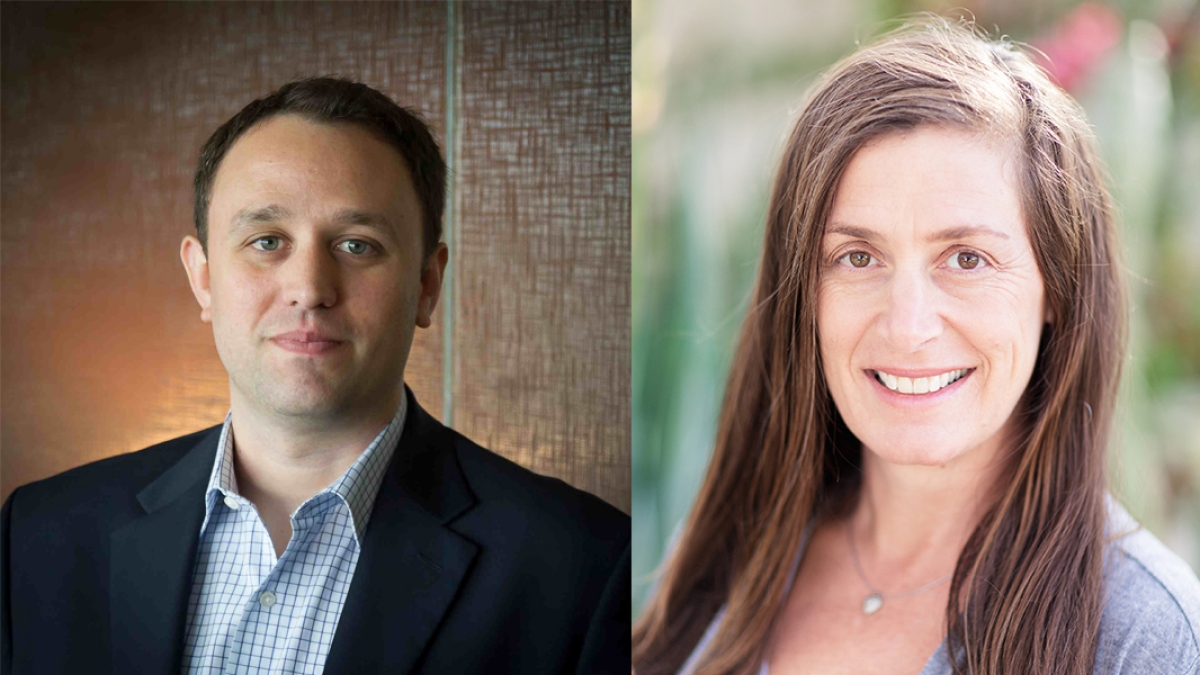Conservation, public management scholars collaborate to enhance science outcomes

Derrick Anderson and Leah Gerber.
Arizona State University researchers are working to enhance the public value outcomes of conservation science research. Leah Gerber, a professor in the School of Life Sciences, will work with Derrick Anderson, a faculty member in the School of Public Affairs, to study the ways in which researchers and organizations create public value knowledge outcomes from conservation science research.
This unlikely collaboration between an ecologist and a public management researcher is a result of ASU’s new Center for Biodiversity Outcomes (CBO) and Center for Organization Research and Design (CORD) which were created in part to facilitate interdisciplinary collaboration at the frontiers of biodiversity and organizational design research. As leaders of the two centers, Gerber and Anderson are now teaming up with a joint grant from the National Science Foundation’s Science of Science and Innovation Policy (SciSIP) program.
With the aid of graduate students in their research centers, Gerber and Anderson will study the information exchange between research labs and public decision makers.
“The core of this research is developing an understanding of what types of scientific strategies and organizational structures best translate conservation science research into useful, socially beneficial outcomes,” said Anderson.
“CBO was founded to translate biodiversity research into practical outcomes, and partnering with an organizational design expert will give us some great insight into how the structure of institutions can facilitate that process,” said Gerber.
As part of their study, Gerber and Anderson will be identifying and conducting interviews with scientists who have proven successful at creating public value from their research. Using data collected from these interviews, the team will create a map of knowledge partnerships that translate scientific discovery into public value. Planned research has broad applications within the conservation and wider public policy space. Perhaps most importantly, it will serve as a model for other collaborative efforts bridging scientific research to public action.
“I could not be more thrilled to have the opportunity to document and diagnose the efficacy of CBO as a boundary organization,” said Gerber. “In addition to paving the way from knowledge to action, we hope to establish a replicable model that could be broadly employed beyond ASU.”
More University news

ASU establishes Center for Free Speech, will host annual free speech forum
Arizona State University is establishing a new Center for Free Speech to encourage the uninhibited exchange of ideas, and the…

Public affairs professor, back at ASU after 3 years with NSF, is named Sackton Chair
After three years at the National Science Foundation, Professor Mary Feeney has returned to Arizona State University, where she…

A decade strong: ASU takes top spot in innovation for 10th year in a row
For the 10th year in a row, Arizona State University is No. 1 in innovation in the newly released annual “Best Colleges” 2025…